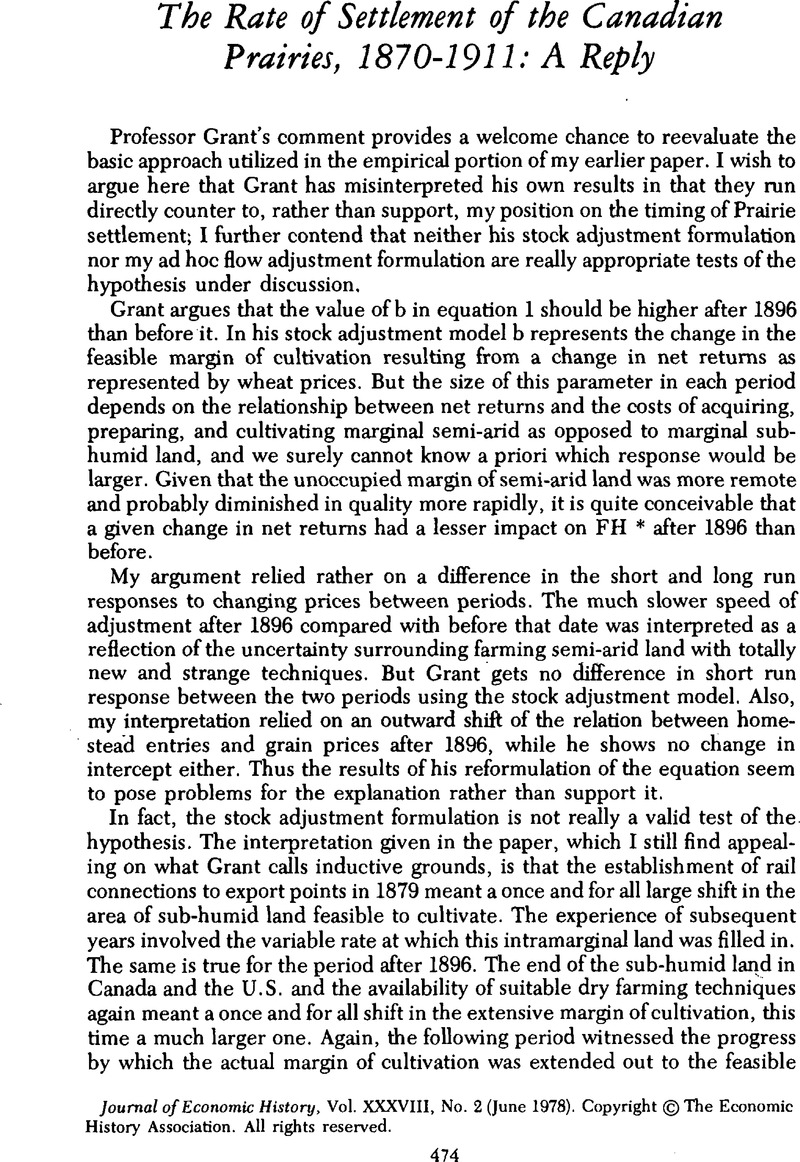Published online by Cambridge University Press: 11 May 2010

1 For instance, the logic of the stock adjustment model would seem to require a fall in the stock of homesteads in response to a fall in grain prices and thus net returns. Yet until the immediate post-war period a fall in grain prices merely led to a fall in the flow of new entries. The cumulated sum continued to increase, but at a slower rate. The stock adjustment formulation on the other hand would be appropriate for analyzing the initial settlement adjustments in the early 1920s, the interruption of this process later in the decade and the retrenchment and adjustments to cultivated acreage made in the Great Depression.